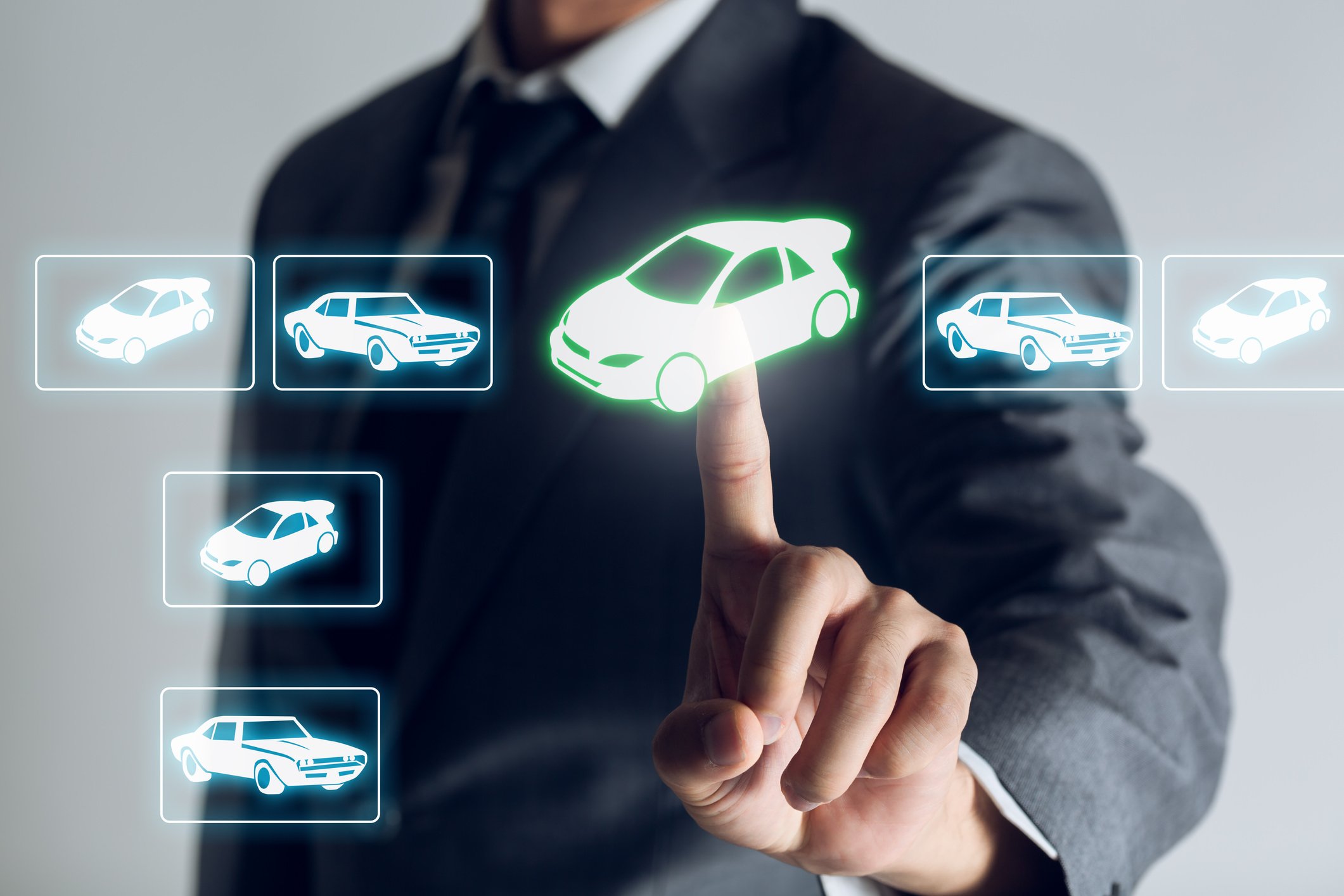- Blog
- How to Import a Used Car to Serbia
How to Import a Car to Serbia
Follow this guide on importing used cars to Serbia to learn which documents you need, how customs duty and VAT are calculated, and what rules to follow.
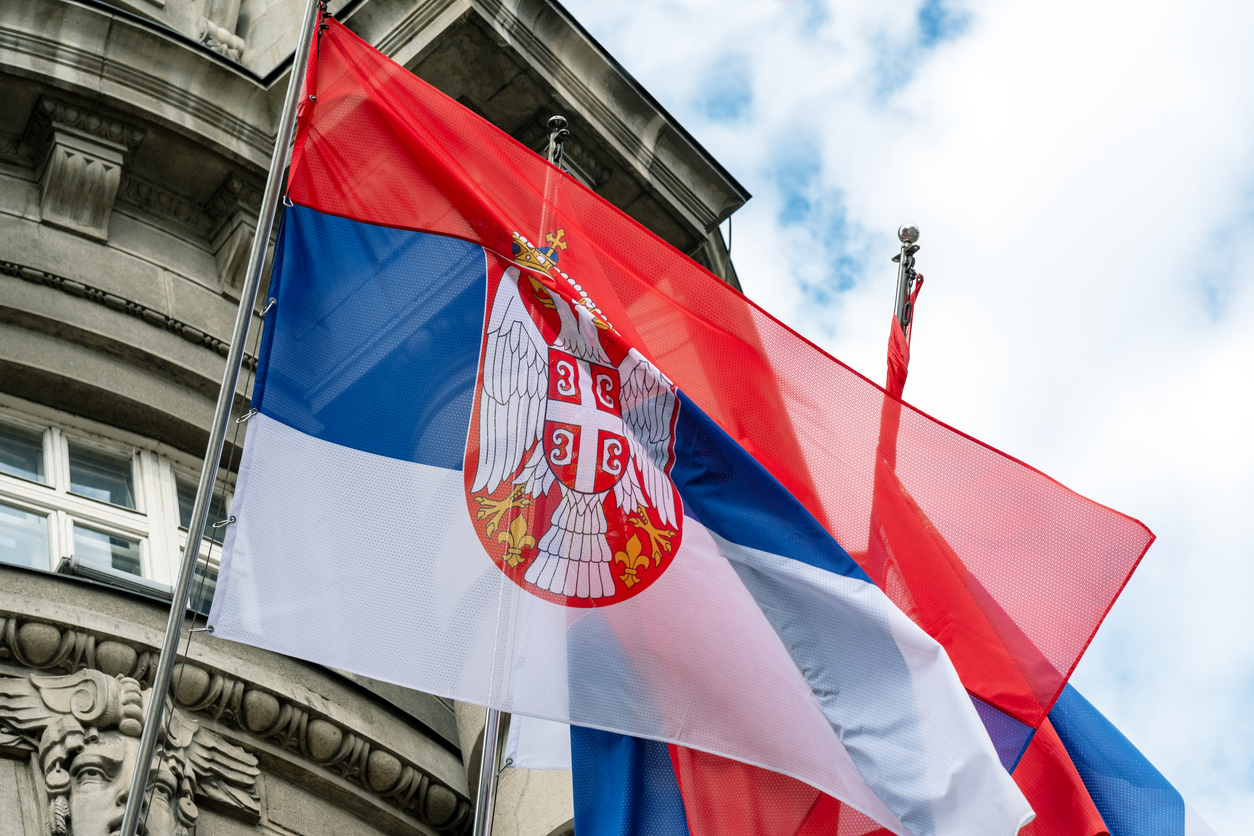
The process of importing used cars to Serbia is fairly simple, so you can easily expand your dealership’s offer beyond local supply. Also, importing used cars lets you offer better-priced models your buyers actually want.
But before you start importing, it’s wise to get to know Serbian import regulations, necessary documentation, and taxes, so that the entire process from purchase to delivery goes smoothly.
Let’s start by learning what vehicles you can import to Serbia.
Understanding Serbian car import regulations
Serbian Customs allows you to import cars using all fuel types. The only limit for import is the Euro 3 standard, meaning the car has to come out of the factory meeting Euro 3 or above.
So, if you try to import an older car that was originally built below this standard and was later modified to meet it, customs won’t let it in.
Fortunately, almost all used cars that are currently sold at auctions already meet this standard, so that’s one less thing to worry about.
When it comes to importing damaged vehicles, Serbian Customs will allow cars that aren’t roadworthy only if the damage is fixable with minimal work.
For example, if a car has a defective battery or a gearbox that’s blocked, you can still import it because those issues can be repaired.
Instead of relying mainly on the price shown on the invoice, Serbian Customs calculates VAT and duty based on the AMSS catalog value of the car. This means even if you paid less (or more) abroad, the catalog value is what matters for tax purposes.
Documentation for importing a vehicle to Serbia as a business
Here’s a list of documents you’ll need during the import process.
► Vehicle purchase invoice
The vehicle purchase invoice proves that you’ve bought the car and you legally own it. The invoice has to contain information like the seller and buyer details, vehicle make and model, VIN number, and the purchase price.
If you bought the car through eCarsTrade, you’ll have the invoice on your Personal Page.
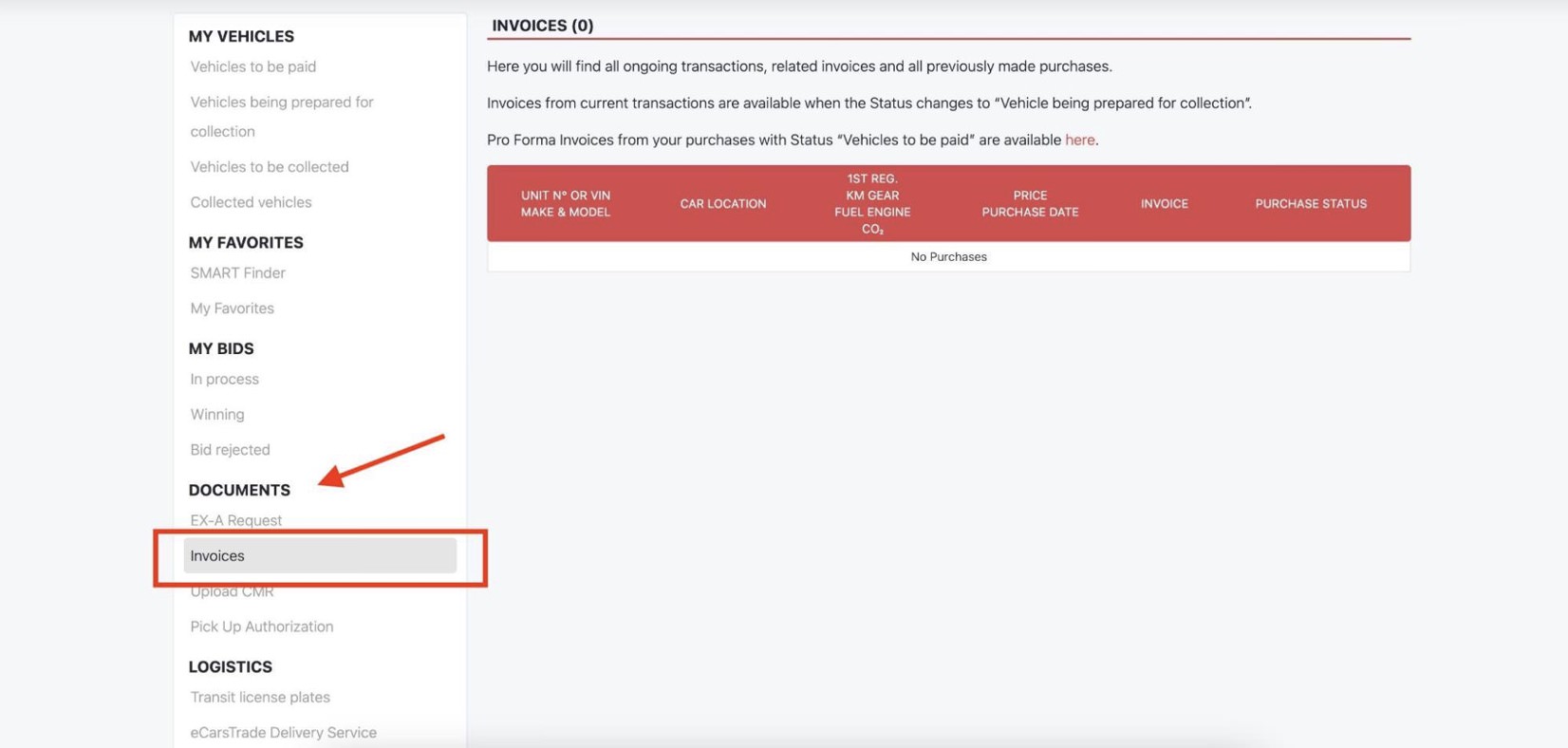
► Original registration papers
You’ll also need the original foreign registration documents. The original registration papers are included with all cars sold on eCarsTrade, so you don’t have to worry about missing paperwork at customs.
► Export declaration (EX-A)
The EX-A (export declaration) is a document that confirms the car has officially left the EU. The seller in the country of origin files it, and customs at the border validate it.
For you as a buyer, the EX-A is important because it proves the car was exported, which lets you complete the import process and claim back VAT.
Also, the EX-A declaration contains the MRN, which serves as a reference number you can use to track and confirm the export process.
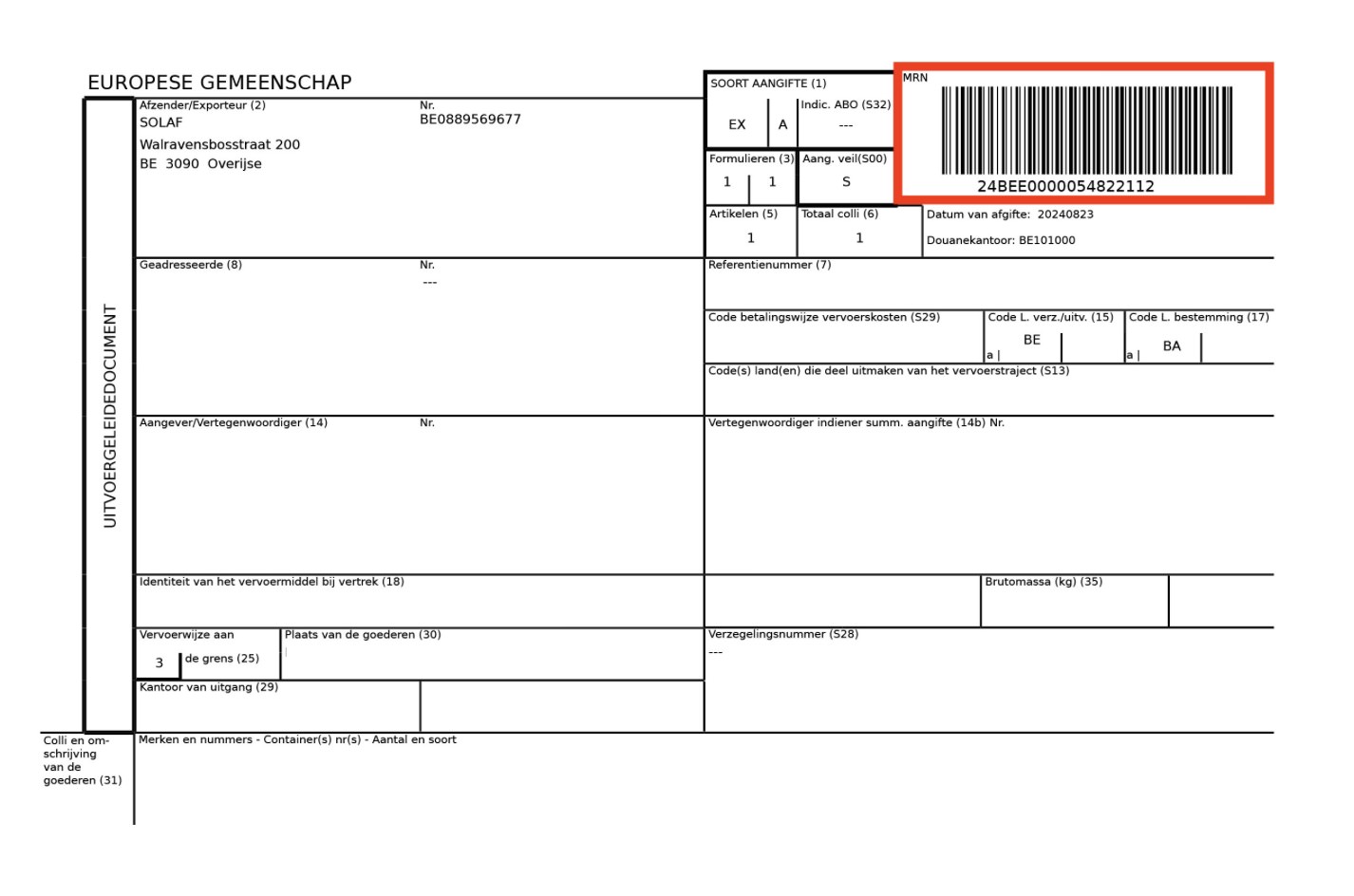
► EUR1 certificate
This document confirms that the car originates from the EU, and it allows you to benefit from reduced customs duty when importing into Serbia.
With the EUR1, your import into Serbia qualifies for 0% customs duty under Serbia’s free-trade arrangements with the EU. Without it, you’ll have to pay the regular 12,5% duty.
You can see what the EUR1 certificate looks like below.
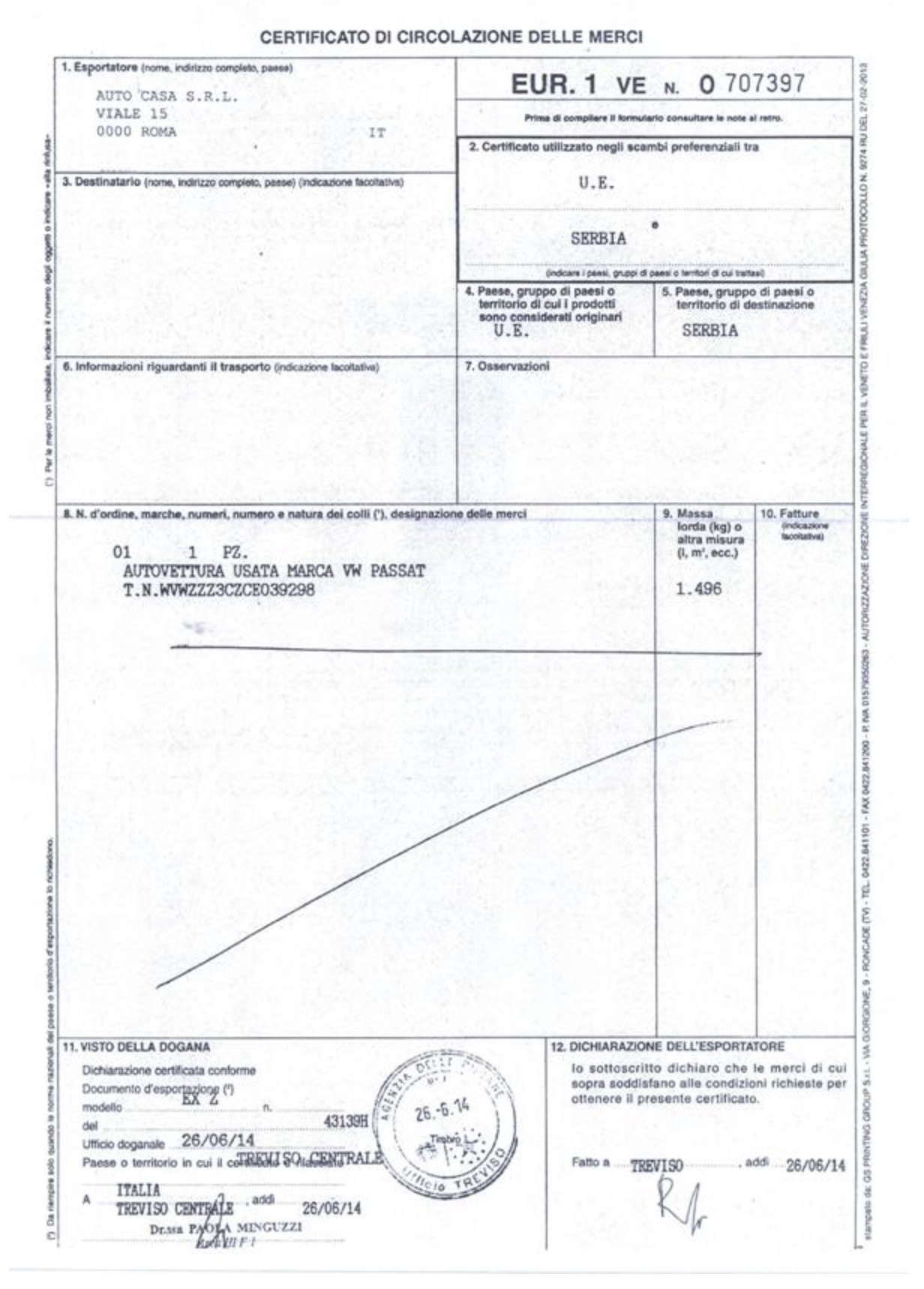
Image source: Carina.rs
For lower-value cars, you can use an origin declaration on the invoice instead of an EUR1.
The car’s value has to be under €6,000 by the AMSS catalog (not the purchase price). The invoice then includes a short statement that the goods are of EU origin, like the one in the example below.
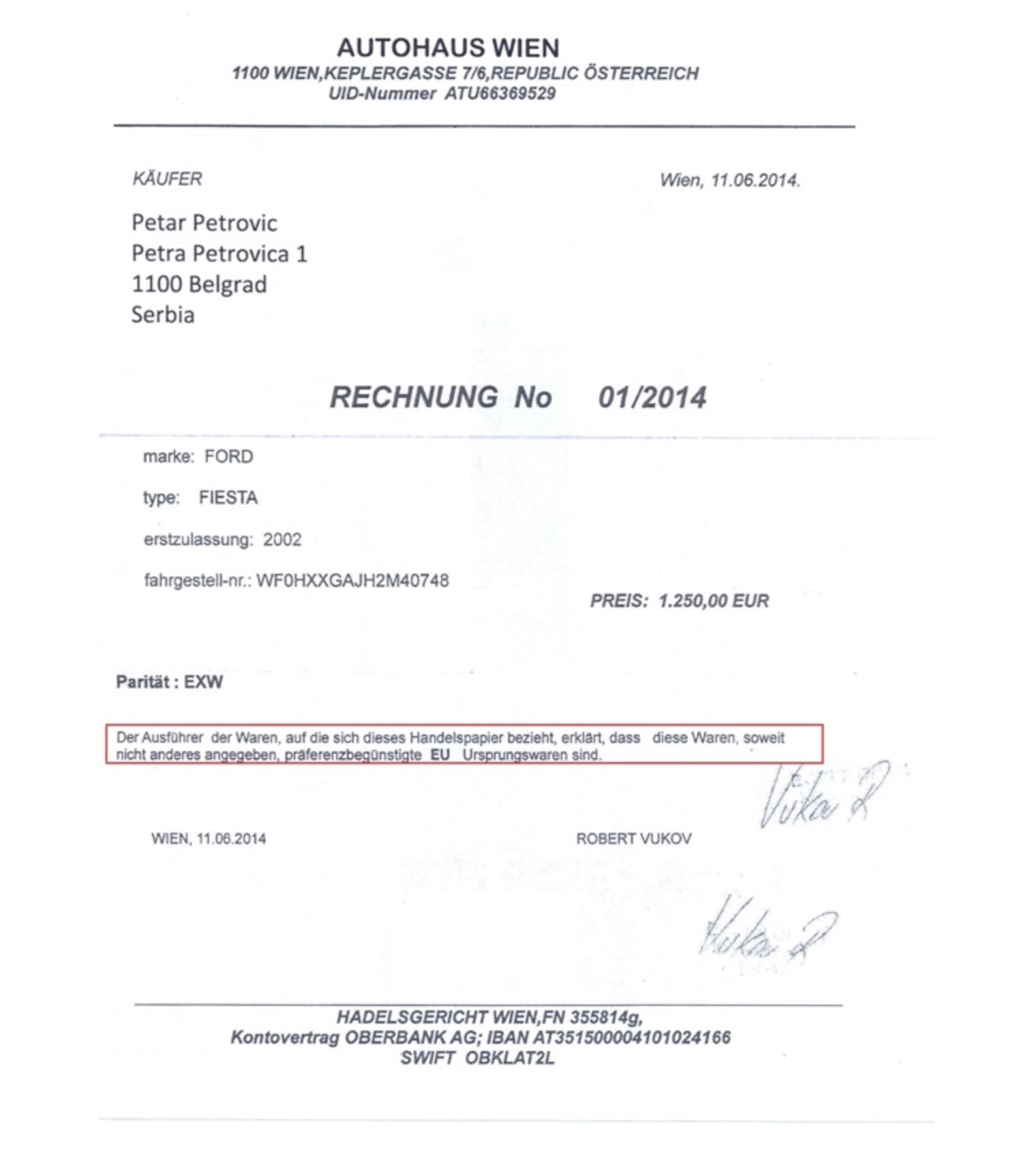
Image source: Carina.rs
With that declaration, you still get 0% duty.
► Certificate of conformity (COC)
A certificate of conformity (COC) is a document that shows that the vehicle meets the original emission and technical standards. While it’s not mandatory for the import itself, it’s very helpful later, when you take the car through homologation.
Some used cars are sold with the COC included. However, most used cars don’t come with the original COC, so you might have to buy a certificate from providers like EUROCOC or COC Europe.
Taxes when importing a car to Serbia
Before you start purchasing and importing cars, you have to know what taxes and costs are involved, because they directly affect your final price. The two costs of import to consider are customs duty and VAT.
Customs duty
If the car was manufactured in the EU, and you have the EUR1 certificate or the declaration of origin to prove it, you won’t have to pay customs duty.
If you’re importing a car manufactured outside of the EU, the rate of 12,5% of the car’s value applies.
VAT
The way VAT is treated in Serbia depends on whether you bought the car from an EU seller and whether the car was sold in the standard VAT scheme or the margin scheme.
For used vehicles from the EU, check the VAT status.
For instance, most cars on eCarsTrade are sold netto (VAT deductible, or VAT excluded), so you pay standard 20% Serbian VAT on the customs value (AMSS catalog value) plus any duty.
If you’re VAT-registered in Serbia and the cars are for resale, you can usually deduct the import VAT in your VAT return.
If a car was sold under the margin scheme, you can’t reclaim that EU VAT, and you still owe 20% import VAT in Serbia.
And if you’re importing from outside the EU, you always pay 20% Serbian VAT on the customs value plus any duty, regardless of how the car was sold.
Step-by-step process - from purchasing a car to importing it to Serbia
Let’s see the entire process step by step, from buying the car to registering it.
1. Research and buy the car
You should start by researching what types of cars perform the best in your local area. Whether that’s petrol, hybrids, or EVs, or even specific body styles, you can use eCarTrade’s filters to narrow your search.
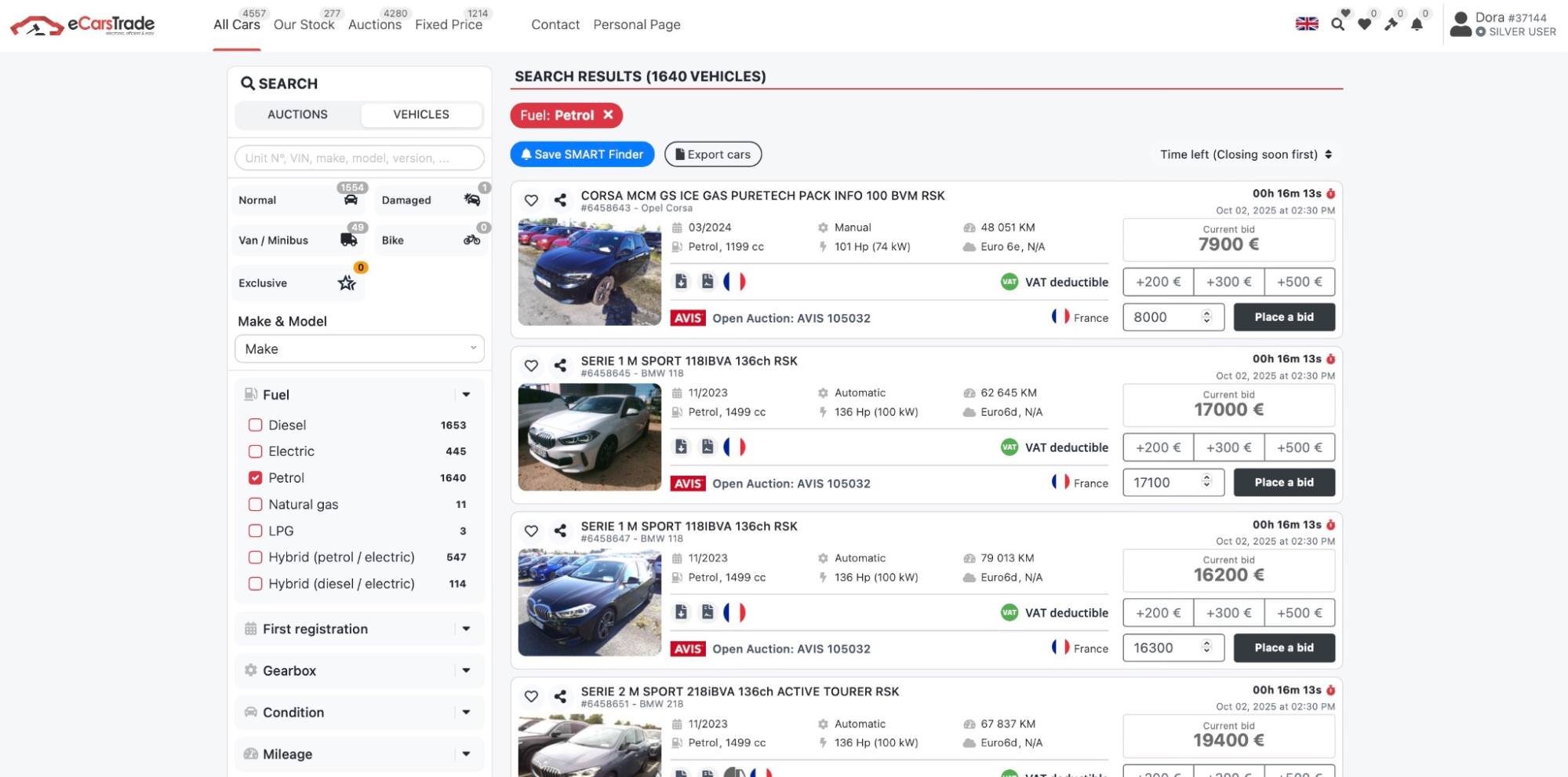
After you’ve placed your bid, won the auction, and made the payment, you’ll receive your copy of the purchase invoice, which is the first document you’ll need.
2. Arrange transportation
The next step is arranging transportation. You’ll have to decide whether you’ll go pick up the car yourself, or if you’ll hire a truck transport agency.
Driving it yourself usually means getting temporary transit plates, like Zoll plates in Germany, along with short-term insurance to cover the trip.
Hiring a transport company might cost more, but they handle everything for you (including customs paperwork and documentation) which saves time and helps you avoid mistakes at the border.
3. Request EUR1
If you’ve bought a car from the EU, then your next step is requesting the EUR1. This will allow you to pay 0% customs duty.
4. Request the EX-A export declaration
You’ll need the EX-A declaration for two reasons: completing the process of exporting the car outside of the EU, and getting your VAT refund.
On eCarsTrade, you can request the EX-A in the Documents section in your eCarsTrade profile.
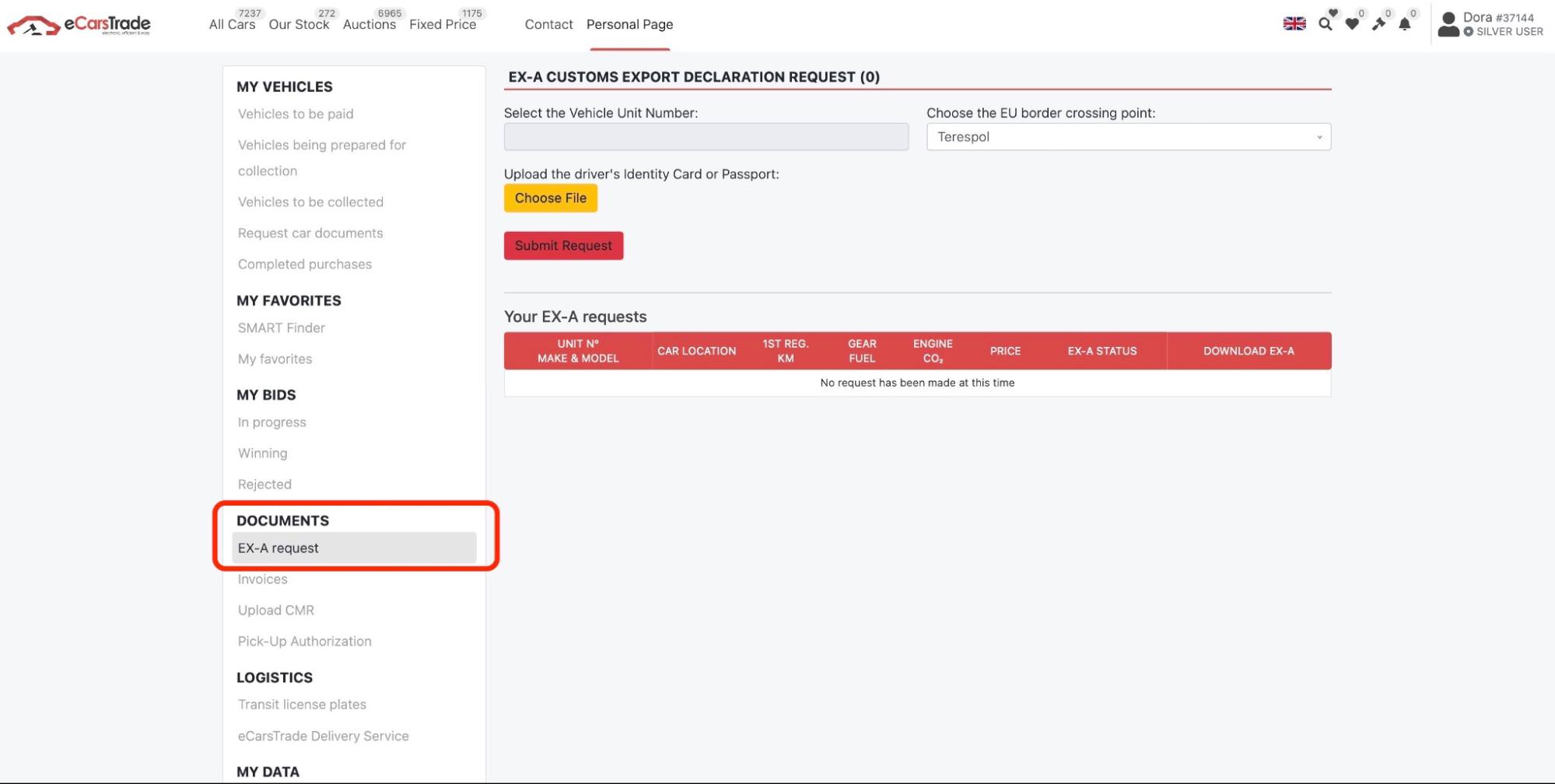
5. Claim your EU VAT refund
Once the car has left the EU (which you can track via the MRN number on MRN Follow-Up), you can request your VAT refund.
As a non-EU buyer, you paid the seller a deposit equal to the VAT in their country. For example, if you’ve bought a car from a German seller, you’ve paid a deposit equal to 19% of the car’s value.
Now is the time to send the seller the confirmation that the car has left the EU, and they’ll refund the VAT to the bank account from which you made your payment.
6. Present documents to Serbian Customs
At import, your customs broker submits the JCI (Jedinstvena carinska isprava), which is the official Serbian customs declaration. Along with the JCI, you’ll need to provide:
- Purchase invoice or sales contract
- Foreign registration document
- EX-A with MRN (EU exit is validated by EU customs)
- EUR1 or invoice origin declaration (they will validate it at the Customs)
- Transport documents and your company details
Customs then checks the documentation, values the car (using the AMSS catalog as a reference), and calculates any duty plus 20% VAT on the customs base.
7. Go through Customs inspection
A Customs official will check the car in person before clearance. They’ll look at the VIN number, verify the mileage, and note any visible damage.
If everything is in order, you’re done with the physical part of importing a car to Serbia.
After the border check, your Customs official gives you an accompanying note (popratnica), which you use to report to the local customs office in your city within 72 hours.
During that time, the car is placed in a customs warehouse until the clearance is complete.
8. Pay VAT
You’ve got the VAT calculation previously. After you pay it, the car is officially cleared and released from the warehouse.
9. Go through technical inspection and register the car
After customs clearance, the car has to pass a technical inspection in Serbia.
If the car is being registered in Serbia for the first time, you’ll also need a homologation certificate that confirms the car meets local standards. You’ll be asked to present the COC at this step.
Once that is done, you can proceed with registration at your local police station. With that, your imported car is fully legal to drive and ready to resell to your buyers.
Get to know the Serbian used car market
Serbia has 79% of used cars on the road, compared to only 21% of new ones, which shows how much drivers rely on the second-hand market.
To keep up with that demand, more than 130,000 used cars are imported every year.
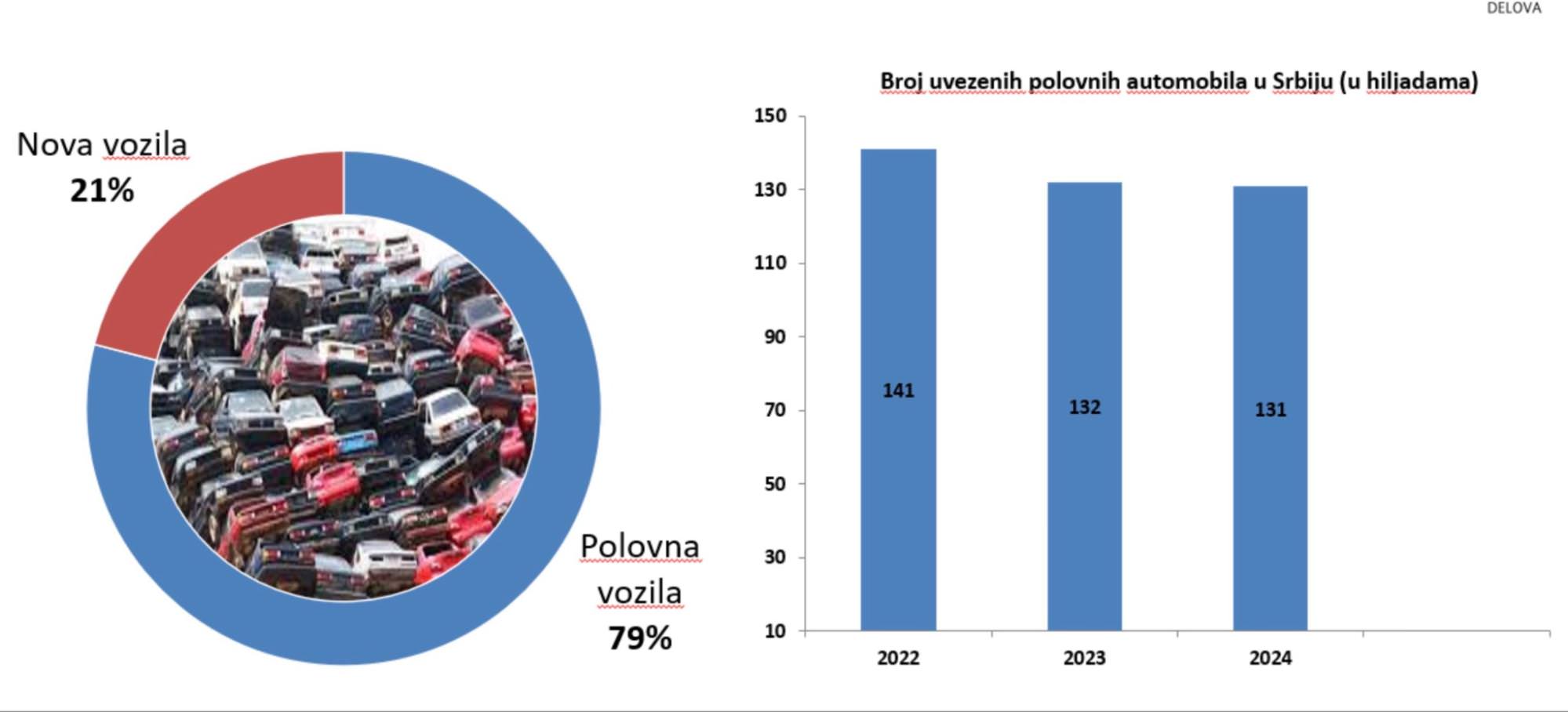
Source: Uvoznici vozila
So, that’s great news for all used car traders.
If you’re trying to decide what cars to import, you should keep in mind the top-selling used car models in 2024 in Serbia, which were:
- VW Golf
- VW Polo
- VW Passat
- Audi A4
- Opel Astra
As you can see, these are mainstream models that are easy to service and fit most buyer budgets.
When it comes to fuel type, petrol is the leading fuel (48%) on the used market, says Uvoznici vozila.
It’s followed by diesel and a growing share of hybrids. As of now, EVs are still a small niche due to limited charging stations.
In 2025, Serbia still applies the Euro 3 requirement for used imports. There has been some discussion about moving to higher standards, but no changes have yet been enforced.
So, it’s best to follow updates from Serbian Customs and industry groups to stay informed and compliant.
Importing a car to Serbia - FAQ
► Can I import any car to Serbia?
In 2025, you can import cars with all fuel types, but they must meet at least the Euro 3 emission standard.
► How much is customs duty in Serbia?
With an EUR1 certificate or an origin declaration on the invoice, EU-made cars are exempt from duty (0%). Without it, most passenger cars are charged 12.5% duty.
► How long does the customs process take?
When you enter the border, you have 72 hours to report the car to your local customs office in your city. Clearance and release from the warehouse usually take between 2 and 5 working days, depending on documentation and payment.
► How do Customs determine the value of the car?
Customs uses the official AMSS catalog as the main reference for car values.
Importing vehicles from Europe can be complex, but eCarsTrade is here to simplify the process. Learn how to:
